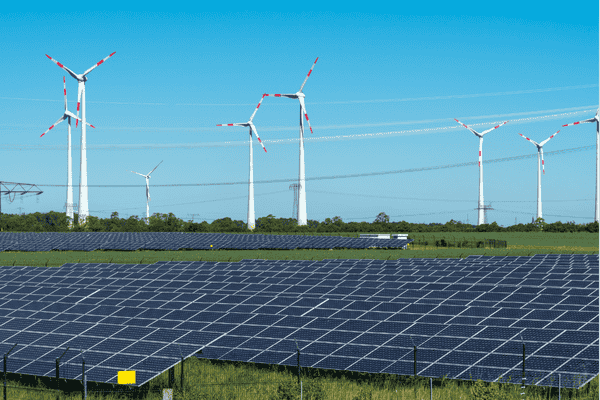- Renewable energy sources are becoming more common, but their variability makes grid management a major challenge.
- Researchers at the University of Virginia have created a groundbreaking AI solution to tackle this, using multi-fidelity graph neural networks to enhance grid flexibility and decision-making.
- Could this innovation be the key to a more stable and efficient energy future?
As renewable energy sources such as wind and solar become more widespread, managing the power grid has become increasingly complex.
Researchers at the University of Virginia have developed an innovative solution: an artificial intelligence model that can address the uncertainties of renewable energy generation and electric vehicle demand, making power grids more reliable and efficient.
Their papers, “Multi-fidelity Graph Neural Networks for Efficient Power Flow Analysis Under High-Dimensional Demand and Renewable Generation Uncertainty,” and “Hybrid Chance-Constrained Optimal Power Flow under Load and Renewable Generation Uncertainty Using Enhanced Multi-Fidelity Graph Neural Networks” have been published in Electric Power Systems Research and Journal of Machine Learning for Modeling and Computing, respectively.
Multi-fidelity graph neural networks: A new AI solution
The new model is based on multi-fidelity graph neural networks (GNNs), a type of AI designed to improve power flow analysis—the process of ensuring electricity is distributed safely and efficiently across the grid.
The “multi-fidelity” approach allows the AI model to leverage large quantities of lower-quality data (low-fidelity) while still benefiting from smaller amounts of highly accurate data (high-fidelity). This dual-layered approach enables faster model training while increasing the overall accuracy and reliability of the system.
Enhancing grid flexibility for real-time decision making
By applying GNNs, the model can adapt to various grid configurations and is robust to changes, such as power line failures. It helps address the longstanding “optimal power flow” problem, determining how much power should be generated from different sources.
As renewable energy sources introduce uncertainty in power generation and distributed generation systems, along with electrification (e.g., electric vehicles), increase uncertainty in demand, traditional grid management methods struggle to effectively handle these real-time variations.
The new AI model integrates both detailed and simplified simulations to optimize solutions within seconds, improving grid performance even under unpredictable conditions.
“With renewable energy and electric vehicles changing the landscape, we need smarter solutions to manage the grid,” said Negin Alemazkoor, assistant professor of civil and environmental engineering and lead researcher on the project. “Our model helps make quick, reliable decisions, even when unexpected changes happen.”
Key benefits:
- Scalability: Requires less computational power for training, making it applicable to large, complex power systems.
- Higher accuracy: Leverages abundant low-fidelity simulations for more reliable power flow predictions.
- Improved generaliazbility: The model is robust to changes in grid topology, such as line failures, a feature that is not offered by conventional machine leaning models.
This innovation in AI modeling could play a critical role in enhancing power grid reliability in the face of increasing uncertainties.
Ensuring the future of energy reliability
“Managing the uncertainty of renewable energy is a big challenge, but our model makes it easier,” said Ph.D. student Mehdi Taghizadeh, a graduate researcher in Alemazkoor’s lab.Ph.D. student Kamiar Khayambashi, who focuses on renewable integration, added, “It’s a step toward a more stable and cleaner energy future.”
Publication Referenced in the Article:
Mehdi Taghizadeh et al, Multi-fidelity graph neural networks for efficient power flow analysis under high-dimensional demand and renewable generation uncertainty, Electric Power Systems Research (2024). DOI: 10.1016/j.epsr.2024.111014
Kamiar Khayambashi et al, Hybrid Chance-Constrained Optimal Power Flow under Load and Renewable Generation Uncertainty using Enhanced Multi-Fidelity Graph Neural Networks, Journal of Machine Learning for Modeling and Computing (2024). DOI: 10.1615/JMachLearnModelComput.2024054885
This article has been adapted from source material published by the University of Virginia.













Comments